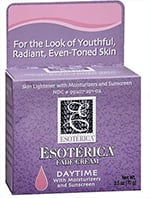Mouse_at_Large
·I've seen quite a few posts where discrepancies between lume on hands and dials has lead to uncertainty regarding originality and this got me pondering.
If the dial and hands had exactly the same lume applied, with the same formulation, as part of the same manufacturing process, at the same time and the material of the hands and dial was the same, then it would be expected that the lume on the hands and dial would discolour/lose luminosity/crumble or whatever at pretty much the same rate over time leading to an even condition and appearance.
However, if any of the above variables does not hold, then over time is it possible that entirely original parts can display differing lume condition?
For example, if the dials, hands or both were manufactured by third parties who applied differing lume formulations. Perhaps, even if all manufacturing was carried out in-house, differing lume formulations were applied to hands and dials. Then there is the question of the substrate to which the lume is applied. Does lume applied to bare metal react differently over time than to lacquer etc.
As I say, it's a bit esoteric, but at least one inquiring mind would like to know...😀
If the dial and hands had exactly the same lume applied, with the same formulation, as part of the same manufacturing process, at the same time and the material of the hands and dial was the same, then it would be expected that the lume on the hands and dial would discolour/lose luminosity/crumble or whatever at pretty much the same rate over time leading to an even condition and appearance.
However, if any of the above variables does not hold, then over time is it possible that entirely original parts can display differing lume condition?
For example, if the dials, hands or both were manufactured by third parties who applied differing lume formulations. Perhaps, even if all manufacturing was carried out in-house, differing lume formulations were applied to hands and dials. Then there is the question of the substrate to which the lume is applied. Does lume applied to bare metal react differently over time than to lacquer etc.
As I say, it's a bit esoteric, but at least one inquiring mind would like to know...😀


